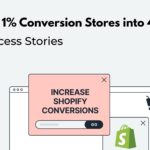- By Kiwi Commerce
- 04 Sep, 2025
- eCommerce Development
Boost Your eCommerce Sales with Smart Cart Page & Checkout Optimisation
Did you know 3 out of 5 websites bury their Add to Cart (CTA) button?
This one small mistake can drastically impact:
- Your Add to Cart rate
- Your overall conversion rate
- And ultimately, your revenue and profits
But this doesn’t mean you should plaster the CTA at the top of your product page. Instead, it should be placed strategically, right when your visitor is ready to take action. A well-timed, well-placed CTA can significantly enhance user experience and conversion outcomes.
Let’s explore how optimising the Cart Page and Checkout UX can supercharge your results using Cetaphil’s product page as a reference.
Whether you use Shopify, Magento, or the Hyvä theme, these optimisation strategies apply seamlessly to your store.
10 Proven Changes That Drive Conversions
Using a before-and-after design example of Cetaphil’s product detail page, here’s how to optimise for higher conversions:
1. Purpose Above Product Name
Place the problem your product solves just above the product name. For example, “Dry Skin | Acne-Prone Skin”. This instantly tells the visitor if the product is relevant.
2. Add a 1–2 Line Summary
Just under the product name, include a benefit-driven summary. This warms the user up and gets them interested.
3. Price Justification with Clarity
Show product quantity, unit size (e.g., 125ml), and price per unit. This makes your pricing look more transparent and trustworthy.
4. Showcase Results Visually
Overlay key results or numbers from clinical studies on the product image — like “95% saw clearer skin”.
5. Use Image Thumbnails
Include thumbnails showing product benefits, ingredients, and usage — not just pack shots.
6. Bullet Summary of Benefits
Before the Add to Cart button, add quick, scannable bullet points summarising top benefits (e.g., “Reduces fine lines”, “Deep cleans gently”).
7. Upsell Smartly
Offer quantity options and show potential savings (e.g., “Save 10% on 250ml”). This encourages customers to buy more and boosts average order value.
8. Delivery Promise Near CTA
Place shipping time and delivery rates just around or under the Add to Cart area. This builds trust and urgency.
9. Icons for Product/Brand USPs
Visual elements like icons for “Free Shipping”, “Paraben Free”, “Easy Returns” add credibility and simplify complex info.
10. Cross-Sell with Relevance
Use a “Complete Your Routine” section to offer relevant add-ons. This makes it easier for users to shop more without hunting for related products.
Bonus UX/UI Enhancements
Aside from these 10 core CRO principles, the proposed version of the PDP also:
- Added a cart icon in the header to reduce friction
- Included a free shipping info bar to remove hesitation
- Reduced image height for quicker scrolling on mobile
Final Thoughts
Small UX decisions like when and where you show your Add to Cart button can make a massive difference. It’s not just about placing it above the fold it’s about contextual timing and psychological readiness.
When you guide users through their buying journey step-by-step and build trust with clarity, social proof, and relevance, your conversions will naturally increase. That’s exactly what Kiwicommerce helps you achieve optimizing your store experience for higher engagement and better results.



